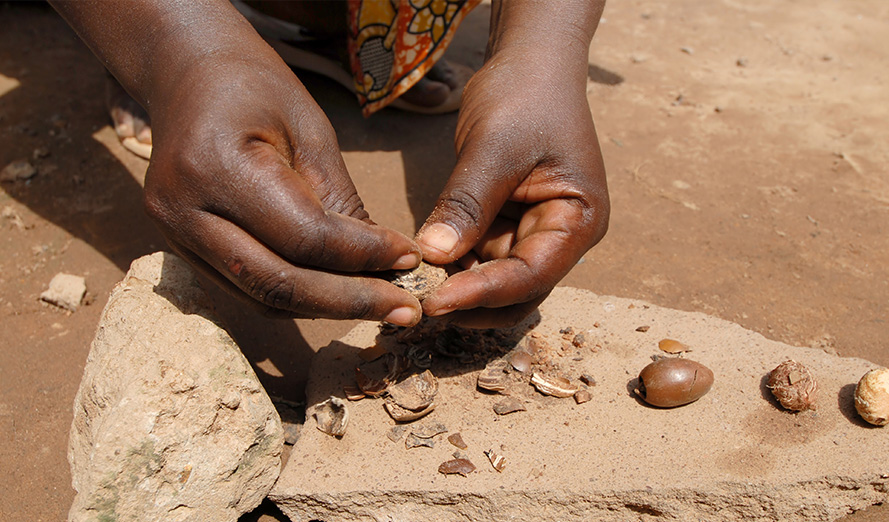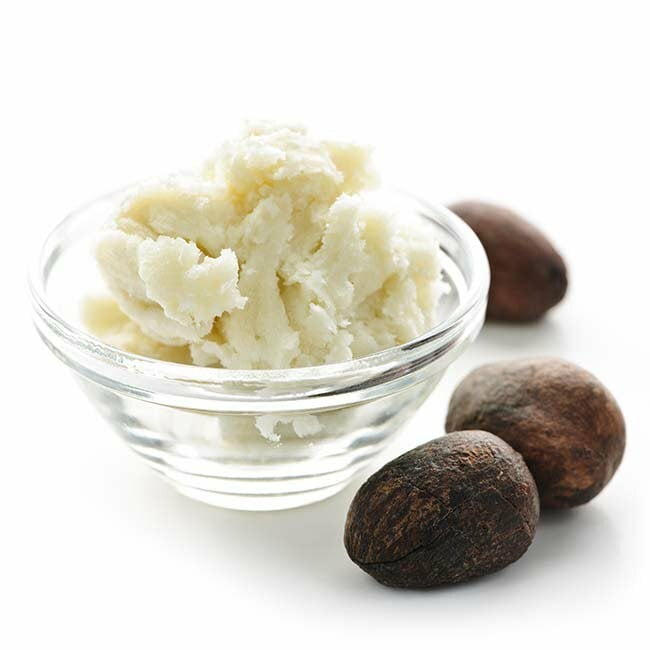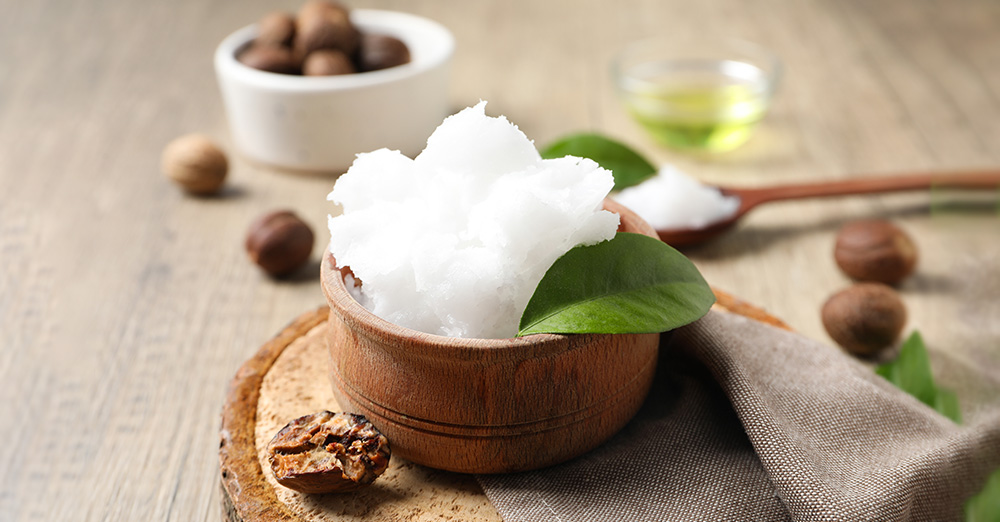Mkarafuu: The Majestic Shea Tree and its Fruit Maturation
The tenacity of life is symbolized by the Shea tree, or Mkarafuu in Swahili. Its natural habitat is Africa’s expansive grasslands. The contrast between its thick, protective bark and the brilliant sky and its drooping limbs gives the tree an imposing aspect. There have been reports of Mkarafuu trees living for hundreds of years and reaching heights of 20 meters. It produces tiny, ivory-colored flowers that develop into edible fruits.
When young, these fruits are a vivid green, but as they ripen in the hot African sun, their hue becomes muted brown. They look like plums, but they’re much bigger and oval. This change, known as Ukomavu, occurs over four to six months, peaking in June and August.
Ukusanyaji: The Art of Harvesting Shea Fruits
Shea fruit naturally falls to the ground once it has fully matured and ripened. We are officially in harvesting season, called Msimu wa Ukusanyaji. Wakusanya matunda, who are typically women, do this service. Early in the morning, when the weather is cooler, and the action is less exhausting, they make their way cautiously across the vast Savannah, picking up fallen fruits with a little touch.
By taking such precautions, which are based on a deep respect for the Mkarafuu tree and the habitat in which it is located, less harm is done to the natural world. The harvesting process is completed by hand, without the aid of machinery. This practice illustrates the Heshima kwa Maisha (respect for life) ethos by preventing any harm to the tree.
Mbegu and Kukausha: Extracting and Drying the Seeds
The Mbembes, or hard, nut-like seeds found within each rotten fruit, are where shea butter starts. Since the outer layer of the fruit is often consumed or sold locally due to its great sweetness and health benefits, the Mbembes, which are found in the inner layer, is typically left behind for the transformation process. The seeds next undergo a time-consuming sun-drying process called Kukausha. As the nuts dry out in the hot African sun, they become increasingly brittle and ready to be shipped off to be processed into shea butter.
Siagi: Transforming Shea Seeds into Butter
The Mbembes have broken apart right after the Kukausha process to reveal the precious kernels inside. The next step is to roast and grind them into a fine powder, which creates a thick paste with a velvety consistency. Typical tools for Usagaji, as this method is known, are simple stones or wooden implements. The addition of water helps the crushed kernels turn into a thick paste.

Shea butter, also known as Siagi, is produced from the Shea fruit by kneading the paste until the oil separates and then boiling the pure butter to remove any remaining impurities.
On the other hand, the industrial process of Siagi involves using high-tech machinery for grinding and cold pressing. This procedure successfully retains the kernels’ nutritious worth without heat or chemicals. Depending on the needs of the market or the cosmetics business, additional processing may involve deodorizing, bleaching, or filtering.
Packaging and Usafirishaji: From Containers to Global Distribution
Shea butter is packaged in jars, tubs, or sachets when it reaches its final form to be ready for distribution, or Usafirishaji. Siagi’s moisturizing, anti-inflammatory, and anti-aging properties make it highly sought after around the globe. This is why you’ll find it in a wide variety of skincare, cosmetic, and even food products, bringing it to consumers in all corners of the globe.
Uendelevu: Sustainability in Shea Butter Production
Uendelevu, which means “sustainability,” is important to producing shea butter. Several African communities have formed cooperatives to foster moral business practices, equitable revenue distribution, and ecologically sound harvesting. These efforts help local economies and empower women, which is crucial to preserving cultural heritage.

Shea butter (karité butter)
Pure and top-quality shea butter for cosmetic use. Its genuineand freshingredients guarantee a satisfactory content of vitamins A and E accountable for postponing the skin aging process. Our product has a characteristic smell, color and consistency proving that it’s not thinned with other oils.
The Mkarafuu tree can aid in environmental preservation because of its long lifespan and capacity to thrive on degraded soil. This tree is a living manifestation of the Swahili proverb Mti ni chai, which means “Trees are life,” as it aids in reforestation and works to prevent desertification.
Shea butter represents a positive balance between human activity and the natural world because of its origin story. It begins with the resilient Mkarafuu trees of the African Savannah and finishes on store shelves worldwide. It perfectly captures the spirit of reverence, metamorphosis, and longevity.
References
Lin, T. K., Zhong, L., & Santiago, J. L. (2017). Anti-Inflammatory and Skin Barrier Repair Effects of Topical Application of Some Plant Oils. International Journal of Molecular Sciences, 19(1), 70. Retrieved June 28, 2023, from https://www.ncbi.nlm.nih.gov/pmc/articles/PMC5796020/
Pazyar, N., Yaghoobi, R., Ghassemi, M. R., Kazerouni, A., Rafeie, E., & Jamshydian, N. (2013). Jojoba in dermatology: a succinct review. G Ital Dermatol Venereol, 148(6), 687-691. Retrieved June 28, 2023, from https://www.ncbi.nlm.nih.gov/pmc/articles/PMC5796024/
Shea Institute. (n.d.). Twenty-one reasons to use Shea Butter. Retrieved June 28, 2023, from https://www.sheainstitute.com/21reasons/
WebMD. (n.d.). Shea Butter: Uses, Side Effects, Interactions, Dosage, and Warning. Retrieved June 28, 2023, from https://www.webmd.com/vitamins/ai/ingredientmono-1512/shea-butter



